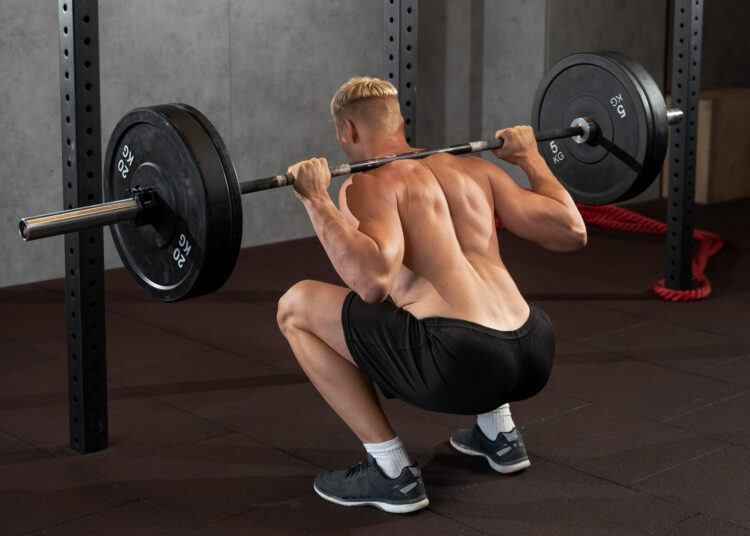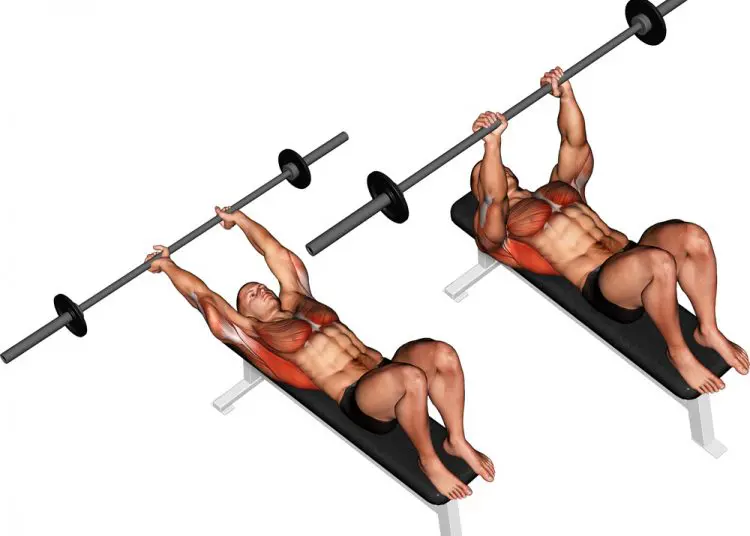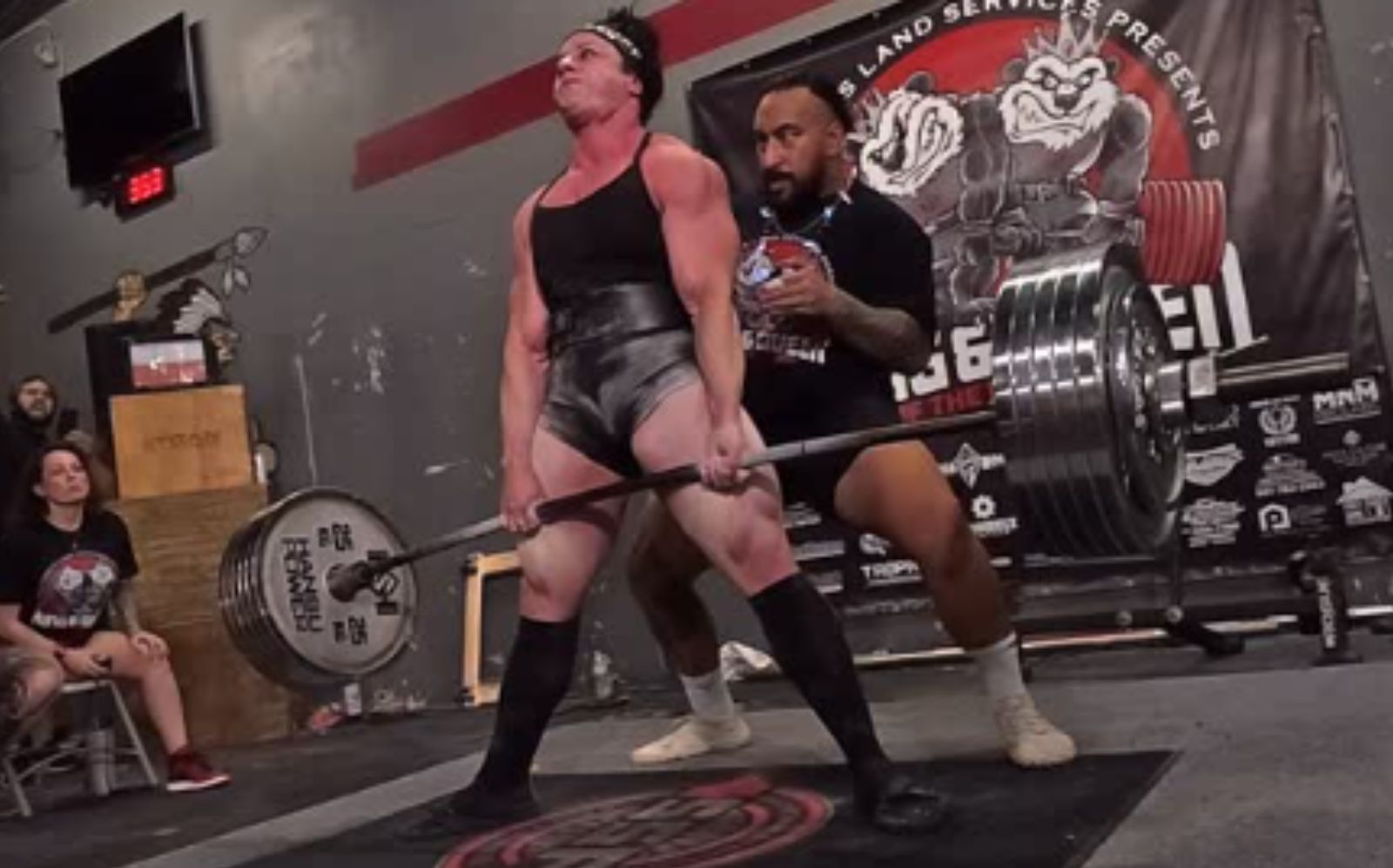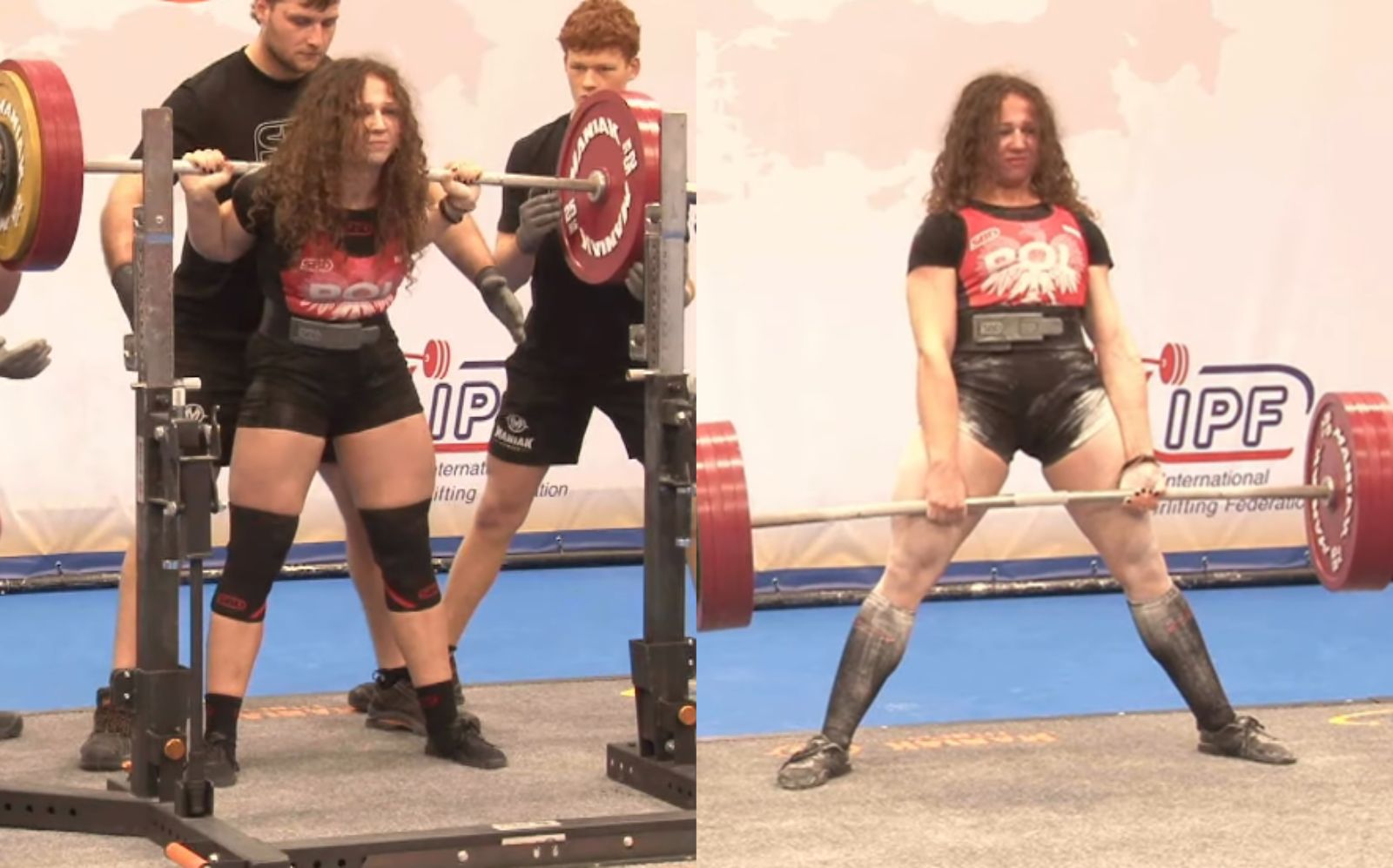I’ve been lifting weights for almost 40 years. I started with a set of vinyl-covered Joe Weider weights in my bedroom when I was in my early teens and eventually progressed to competitive powerlifting. I’ve also owned a gym and worked as a personal trainer for more than three decades.
During this time, I’ve followed many of the best training programs ever written. From Jim Wendler’s 5/3/1 to Arnold Schwarzenegger’s Blueprint to Mass to Dorian Yates’s Blood and Guts routine—I’ve done them all.
However, the one program that is etched into my memory is the classic 20-rep squat routine. This workout plan is close to 100 years old and yet it’s still a popular rite of passage for many serious lifters.
I tried this program for myself over 20 years ago, and memories of it still haunt me. Yes, it’s that tough!
I recently stumbled across an old training diary that detailed my 20-rep squat experience, so I decided to revisit this program to see if it was as effective as I remember.
In this article, I share details of the program and my results from following it for a month.
Level Up Your Fitness: Join our 💪 strong community in Fitness Volt Newsletter. Get daily inspiration, expert-backed workouts, nutrition tips, the latest in strength sports, and the support you need to reach your goals. Subscribe for free!
What is the 20-Rep Squat Routine, Anyway?
The 20-rep squat routine—also known as “Super Squats”—is one of the oldest and most grueling muscle-building programs in bodybuilding. It first appeared in the 1930s and was designed to help underweight young men pack on weight and muscle size fast. Usually paired with the gallon of milk a day (GOMAD) diet, this routine all but guaranteed rapid results.
The program itself revolves around a single set of 20 heavy back squats.
According to program lore, you’re supposed to load the bar with your 10-rep maximum and grind out 20 reps. You can take as long and as many breaths as you want between reps, but you are not allowed to rerack the bar until all 20 reps are done. As such, it’s as much a test of conditioning and determination as it is of strength.
Needless to say, many lifters choose to start with a lighter weight and ease into the program more gently. This would be my approach.
The routine gained even greater popularity in the late 1980s when Dr. Randall J. Strossen released his book Super Squats: How to Gain 30 Pounds of Muscle in 6 Weeks. Strossen never claimed to have invented the 20-rep squat program, but he did bring it to a new generation of lifters, and the book became a cult classic in the strength community.
Over the decades, countless bodybuilders and strength athletes have credited the program for their early growth spurts, including Tom Platz, owner of arguably the best legs in bodybuilding. While Platz didn’t follow Strossen’s version, he did famously do sets of high-rep squats to build his iconic legs.
The Rest of The Program
While squats are the centerpiece of this program, it’s actually a full-body routine done three non-consecutive days per week, typically for 4 to 6 weeks. The rest of the workout is built around basic compound lifts, including overhead presses, bench presses, bent-over rows, and other high-value exercises.
But make no mistake—everything revolves around that one set of squats. You do it first, while you’re fresh, and then drag yourself through the rest of the workout.
A program as intense as 20-rep squats isn’t meant for long-term use. Overtraining and burnout are always a risk. Rather, it’s designed to shock your body into rapid growth. Think of this routine as the ultimate plateau buster!
With all that in mind, I decided to take on the challenge again and see what four weeks of 20-rep squats could do for me.
My Four-Week 20-Rep Squat Routine Plan
Over the years, there have been numerous 20-rep squat routines, each one as brutal as the last—I was spoilt for choice! So, I decided to use Dr. Strossen’s classic Super Squat program, as that looked like the most practical and realistic.
Like most 20-rep squat routines, Strossen’s Super Squats involves three full-body workouts performed on non-consecutive days, i.e., Monday, Wednesday, and Friday.
| Exercise | Sets | Reps | Recovery | |
| 1 | Barbell Back Squat | 1 | 20 | As long as necessary |
| 2 | Barbell Pullover | 3 | 10-12 | 1-2 minutes |
| 3 | Barbell Bench Press | 3 | 8-10 | 1-2 minutes |
| 4 | Barbell Bent Over Row | 3 | 8-10 | 1-2 minutes |
| 5 | Barbell Shoulder Press | 3 | 8-10 | 1-2 minutes |
| 6 | Barbell Deadlift | 2 | 8-10 | 2-3 minutes |
While the GOMAD diet is the eating plan of choice for this program, I didn’t really fancy chugging down a gallon of milk a day. Instead, I made a conscious effort to eat an additional 500 kilocalories a day to fuel my training and, hopefully, subsequent muscle growth. I did this by having a daily “power shake” which contained the following:
- 1 scoop of protein powder
- ½ cup of rolled oats
- 1 tablespoon of peanut butter
- 1 small banana
- 1 cup of unsweetened almond milk
- 1 teaspoon of honey
With the program set and my modified nutrition plan in place, it was time to dive into the challenge. Here’s how the next four weeks unfolded as I tackled the 20-rep squat routine.
Week One: A Conservative Start
While die-hard fans of this program insist on starting their 20-rep squat journey with their ten-rep max, I decided to ease myself in a bit more gently. After all, the aim is to increase your weights a little week by week, which would be easier if I left myself with room for progress.
So, for my first workout, I loaded the bar with 80 kg/175 pounds and started grinding out the reps. Even with this reduced load, 20 reps of squats still presented a decent challenge, and I had to pause for breath once or twice to finish the set.
The next exercise in the routine—barbell pullovers—is designed to increase chest size by stretching your rib cage. While there’s no solid research backing the idea of rib cage expansion, barbell pullovers do stretch the chest and shoulders, which felt good after the compressive force of heavy squats.
Level Up Your Fitness: Join our 💪 strong community in Fitness Volt Newsletter. Get daily inspiration, expert-backed workouts, nutrition tips, the latest in strength sports, and the support you need to reach your goals. Subscribe for free!
From the barbell pullovers, the workout became fairly conventional, and I completed these exercises with no real issues and, thankfully, no lingering fatigue after the squats. That said, deadlifts were somewhat more challenging than usual, which surprised me as that’s one of my strongest lifts.
Workouts two and three went much the same way as the first, although I added 5 kg/ 11 pounds to each set of 20-rep squats and 2.5 kg/5.5 pounds to each supplementary exercise.
20-Rep Squat Weight:
- Workout 1: 80 kg/175 pounds
- Workout 2: 85 kg/187 pounds
- Workout 3: 90 kg/198 pounds
Week Two: The Start of the Grind
The great thing about performing the same workout three times a week is that you enter the gym knowing exactly what you’re doing. On the downside, this lack of variety can make your workouts somewhat repetitive and boring.
It was only week two, but I was already missing some of my favorite lifts, such as pull-ups, Romanian deadlifts, and Bulgarian split squats. Still, it was only for four weeks, so I just gritted my teeth and stuck to the plan.
Squat-wise, I continued to add 5 kg/11 pounds to the bar each workout. However, by the end of the week, that extra weight was really starting to tell, and the challenge started to become real. I found myself taking longer breathing breaks, and the final 8-10 reps were a test of my determination.
As for the rest of the workout, I managed to increase the weights slightly, but not as much as last week. I suspected I’d have to focus more on the squats and make smaller, less frequent adjustments to the other exercises.
20-Rep Squat Weight:
- Workout 4: 95 kg/209 pounds
- Workout 5: 100 kg/220 pounds
- Workout 6: 105 kg/231 pounds

Week Three: The Struggle is Real—Flat on My Back After Squats
Week three was tough. Each set of squats was a huge challenge, and I found myself taking breathing breaks from the 8th to 10th rep onward. While I didn’t time myself, each set seemed to take an eternity to complete, although it was probably only 2-3 minutes.
Partway through this week, I went from sitting down to recover from squats to lying down. This caused some concern with the staff at the gym, who were worried I was having a heart attack. Needless to say, the 20-rep squat routine is not suitable for anyone with a dodgy ticker!
Progress with the other lifts had slowed, but as long as I could maintain my weights, I’d consider that a win.
Nutrition-wise, this program was leaving me ravenous, so I added an extra power shake per day to my diet. This meant I was consuming 1000 kilocalories above maintenance, which I hoped would provide me with the fuel I needed to complete this challenge.
20-Rep Squat Weight:
- Workout 7: 110 kg/242 pounds
- Workout 8: 115 kg/253 pounds
- Workout 9: 117.5 kg/258 pounds
Week Four: Just Three More Sets of Squats…
The end was near, but knowing how hard the workouts would be, it also felt a very long way away. I was forced to increase my squatting weight by a barely perceivable 2.5 kg/5.5 pounds. But, as the saying goes, this was the straw that broke the camel’s back—almost, anyway.
Instead of a single set of squats, my 20 reps looked more like sets of two or rep reps done with 5-10 breaths between efforts. Each set took close to four minutes to complete and left me feeling utterly spent. After the final workout, I needed a full 15 minutes to recover and get ready for the next exercise.
Still, every rep and workout took me a step closer to the end of this challenge, so I put my head down and battled through, cursing myself for taking on such a brutal program!
20-Rep Squat Weight:
- Workout 10: 120 kg/264 pounds
- Workout 11: 122.5 kg/270 pounds
- Workout 12: 125 kg/275 pounds
The Tale of The Tape and Scales—Results from Four Weeks of 20-Rep Squats

Despite the intensity of this program, especially the last two weeks, I completed all 12 planned workouts and added weight to each set of 20-rep squats. I ate well, slept like the proverbial log, and avoided any additional physical activity. In short, I did everything I could to ensure I achieved the best possible results.
So, how did a month of 20-rep squats affect me? Take a look!
Before the 20-Rep Squats Program
- Bodyweight 180 pounds
- Body fat percentage 11%
- Thigh circumference 23 inches
After the 20-Rep Squats Program
- Bodyweight 190 pounds (+10 pounds)
- Body fat percentage 13% (+2%)
- Muscle gain 5.1 pounds
- Thigh circumference 24 inches (+1 inch)
So, while my results didn’t quite measure up to the “gain 30 pounds in six weeks” promised by Super Squats author Dr. Strossen, I still made some decent gains. However, I have to say, for me at least, the juice was not worth the squeeze, as this was, without doubt, the hardest month of training I’ve ever done!
Closing Thoughts
While the 20-rep squat program is a classic routine with the potential to produce massive gains in muscle mass and strength, it’s not for the faint-hearted. Even if you start with manageable weights, the requirement to add 5-10 pounds per workout each week means you’ll soon be in a world of pain—and each session will feel harder than the last.
That said, the mental fortitude this program builds will make all subsequent training feel far easier, and completing the 20-rep Super Squat routine will definitely earn you some serious gym bragging rights.
Have you tried the 20-rep Super Squats program? How did it go for you? Share your experiences and results in the comments section below!












I have done a lot of intense activities in my day (I’m in my mid 40s) to include numerous powerlifting workouts, pt sessions from hell (USMC infantry vet), ran several full marathons, a couple 50 mile ultras, scaled some peaks, and various other things to get the most out of life. I came across this ol school plan and am 9 weeks in. It hurts, take the recovery SERIOUSLY, but it does work. Last set was just shy of 300, I’m working to 315 before I cycle off it. Brutal awesomeness, I feel strong af, and have threw on extra plates just to see what 400 feels like and with low reps and it’s a treat compared to the 20s lol. I have been eating like a horse up about 10 lbs. I’m drug free, always have been and will be. If your a natty looking for some mass. Here ya go! The ol timers knew what they were doing, and they were tough bastards so beware. For a young athlete this is probably a game changer. Enjoy! Great article.
Nice work JR – keep up the good work.
Semper Fidelis my Marine Brother-in-Arms!